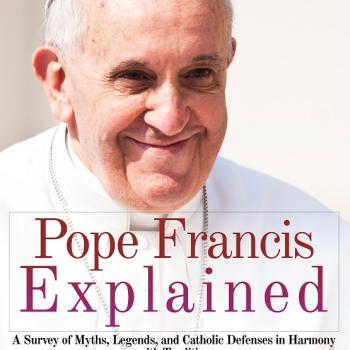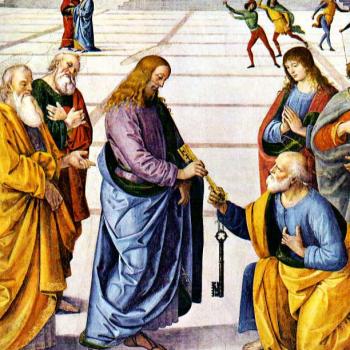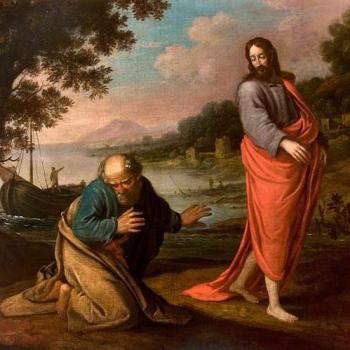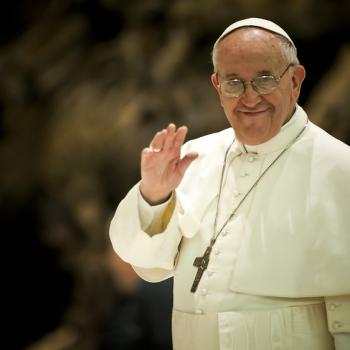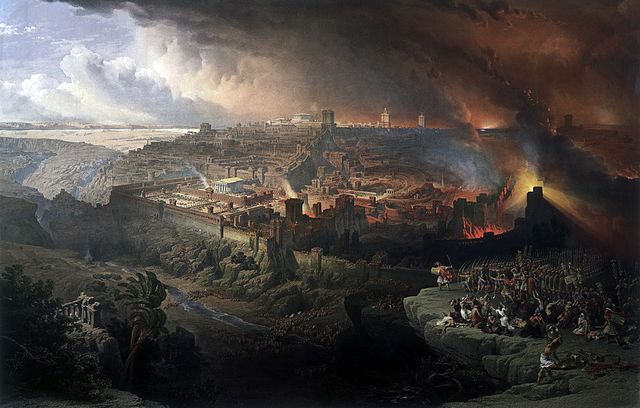
Currently, there are three pope-bashing books tearing up the charts at Amazon:
The Dictator Pope: The Inside Story of the Francis Papacy (Henry Sire)
#4,876 in Books
#1 in Books > Christian Books & Bibles > Biographies > Popes & the Vatican
#4 in Books > History > World > Religious > Religion, Politics & State
#4 in Books > Religion & Spirituality > Religious Studies > Church & State
Lost Shepherd: How Pope Francis is Misleading His Flock (Philip F. Lawler)
#12,877 in Books
#6 in Books > Christian Books & Bibles > Biographies > Popes & the Vatican
#11 in Books > Christian Books & Bibles > Churches & Church Leadership > Church Leadership
#69 in Books > Christian Books & Bibles > Catholicism
To Change the Church: Pope Francis and the Future of Catholicism (Ross Douthat)
#5,358 in Books
#2 in Books > Christian Books & Bibles > Biographies > Popes & the Vatican
#18 in Books > Christian Books & Bibles > Catholicism
#32 in Books > Christian Books & Bibles > Christian Denominations & Sects
I’ve written extensively in critique of the Lawler book, have four articles up about Douthat’s book, and now will examine Henry Sire and his background presuppositions a bit. Both Lawler and Douthat have expressed serious criticisms of Vatican II.
Sire is an historian, whose name was revealed as the author of the book above, just nine days ago or so. His book had been published under the pseudonym, Marcantonio Colonna. So what can we find out about him? Henceforth, his own words will be in blue.
1) Views of Vatican II as Heretical and Not a Legitimate Ecumenical Council
Christopher Lamb, writing for The Tablet (3-22-18), observed:
Mr Sire has written half a dozen history books including one on Catholic tradition where he describes the Second Vatican Council as a “betrayal of the Church’s faith” that needs to be “reversed” and backs the traditionalist group, the Society of Saint Pius X. [made quite clear in Chapter 15, pp. 41-430, 434-438]
The book he is referring to is Phoenix from the Ashes: The Making, Unmaking, and Restoration of Catholic Tradition (Angelico Press, July 14, 2015). The words cited above appear to be from page 205. I can’t access that in the Amazon “Look Inside” feature. But there is plenty in what I can access on Amazon that is very troubling and outrageous:
The Second Vatican Council as a Betrayal of the Faith (subtitle: p. 201)
In the Council’s documents the effects of this [liberal / heterodox] influence were seen concretely in the definition of the sources of Revelation in a Protestantising sense and in the decrees on ecumenism and on the priesthood.
The question of explicit heresy brought in through the council documents will be dealt with later, in the chapters on the priesthood and on religious freedom. Here it would be appropriate to comment upon Gaudium et Spes . . . While free of actual heresy, this is a deplorable document. . . . The document is pervaded by modern materialist standards . . . (p. 203)
Innovation in doctrine is the charge that traditionalists lay against the second Vatican Council, and it also applies to the changes that have emerged since the Council. . . . The case to be made here is that no such innovations of doctrine were made before the Second Vatican Council, and that those of the present time are proof of the heretical position into which the Council has drawn the Church. (p. 207)
What the Church cannot do is teach one doctrine at an earlier time and an opposite one later. Even less can it consistently condemn a doctrine over a period of time and proceed to teach that doctrine immediately afterwards. That is the position into which the modern Church has fallen in its efforts to woo the contemporary world, specifically in its teaching on freedom of religion and on the ideology of secular liberalism. These are not examples of development of doctrine but of plain reversal. (pp. 215-216)
The Second Vatican Council introduced changes which make the Church of today unrecognisable by the standards of tradition . . .
The idea that there have been heretical councils, of some sort, in the Church’s history, is a perfectly familiar one. The so-called Arian councils of Milan, Sirmium, Ariminum, Seleucia, and Constantinople (355-60) are examples of councils regarded as heretical . . . (p. 217)
Only through their defence of objective orthodoxy against false councils was the final assertion of the true doctrine made possible. The same criterion applies to the Second Vatican Council. The definitive judgment on its authority will have to be left to a future council of the Church, but in the meantime Catholics have the right and the duty to point out where its teaching conflicts with the doctrine of tradition. (p. 223)
The idea that the Church has officially adopted a heretical view of its own nature is one of the products of the second Vatican Council and is the premise on which its ecumenical programme has been founded. (p. 383)
2) Negative Views of the Pauline / Ordinary Form Mass
We need to be clear that in attempting to stamp out the traditional liturgy of the Church, Pope Paul VI and the hierarchies of the world after him were following a policy of complete illegality. This assertion is not a legal quibble; it does not rest on a benign oversight in the constitution Missale Romanum. Paul VI did indeed want to consign the traditional rite to oblivion, but he knew that he was not entitled to do so. Yet even the legitimate intentions of legislation need to be expressed in legally valid form, and where the intention is legitimate there is never any difficulty in ensuring that. The failure of Pope Paul VI to abrogate the old liturgy is the consequence of the fact that it was a wholly illegitimate intention. This is merely part of a wider truth, that the entire liturgical reform is steeped in illegitimacy and illegality from beginning to end: the assumption by Bugnini and his associates of a mission beyond what the Council had authorized, the disregard that they showed for the Congregation of Rites, the ignoring of due process in the introduction of reforms, the overriding of the Synod of Bishops when it opposed the new Mass, the forcing of the new rite on the Consilium by Bugnini on the plea that it was the pope’s personal will, his disobedience of the pope’s direction to submit the General Instruction to the Congregation for the Doctrine of the Faith. When the new rite was brought in, the attempt to accompany its introduction with the abolition of the old was part of the same course of illegality. Hence we ought to recognize what the genuine law of the Church is at present: there is no need juridically for the restoration of the traditional rite. The only thing needed for its recovery is that the Church should return to legality. As a matter of law, there is no obligation on any priest to use the Missal of Paul VI for any celebration, and the only liturgy that has universal right in the Latin Church is the one decreed by Pope St. Pius V in the bull Quo Primum. (p. 286)
The Destruction of the Mass (title of Chapter 11, p. 226)
The Mass of Paul VI as a Rejection of Tradition (subtitle, p. 270)
The Mass of Paul VI as an Expression of Heresy (subtitle, p. 276)
It’s not absolutely clear if he denies the validity of the Pauline Mass or not, but almost all reactionaries don’t do that. Nevertheless, he certainly mercilessly bashes and excoriates and condemns it.
3) Views on the Non-Validity of Ordinations to the Priesthood
The Destruction of the Priesthood (title of Chapter 12, p. 287)
[T]here is good reason to doubt the validity of many ordinations under the new rite, conferred by bishops with no intention of transmitting the traditional sacrament on candidates with no intention of receiving it. (p. 323)
4) Negative Views of Ecumenism
I predicted yesterday on Facebook, before I researched Sire’s views on ecumenism: “I would bet the farm that he also despises ecumenism and defines it as indifferentism.” Sure enough:
The Perversion of Ecumenism (subtitle, p. 377)
Even graver, of course, than practical failure are the heretical principles which infused the ecumenical movement and by which it corrupted the understanding of the faithful. The indifferentism lurking in several of the Vatican Council’s documents was made explicit by the liberal ecumenists. (p. 382)
[T]he worst enormity of the ecumenical movement . . . is found in the perversion introduced into the ecumenical movement by John Paul II, who turned it from a search for Christian unity to a general convergence of world religions. (p. 383)
Conclusion
Thus, we now see that Dr. Sire strongly, undeniably holds to all four characteristic planks of the radical Catholic reactionary mindset:
1) Pope-bashing (the whole point of The Dictator Pope).
2) Vatican II-bashing.
3) Ordinary form / Pauline Mass-bashing.
4) Bashing of Catholic ecumenism as indifferentism.
He’s an absolutely classic, textbook example of a radical Catholic reactionary. As a bonus (just to establish beyond all doubt that he is an extremist fanatic), he throws in a questioning of the validity of many thousands of priestly ordinations, and of the canonization of Pope St. John Paul II (page 437: not fully accessible on Amazon). And he is a great admirer of the SSPX: which is the most extreme wing of the reactionary movement.
What all this shows is that the recent fashionable pope-bashing books are not necessarily even-keeled, temperate, nuanced, respectable, scholarly papal criticism, from understated academic types. This type of thinking and critique strongly tends to come from a strong, quasi-schismatic reactionary-influenced backdrop of thought, just as I have documented was also the case with many signatories of the Correctio.
***
Photo credit: The Siege and Destruction of Jerusalem by the Romans Under the Command of Titus, A.D. 70 (1850), by David Roberts (1796-1864) [public domain / Wikimedia Commons]
***




